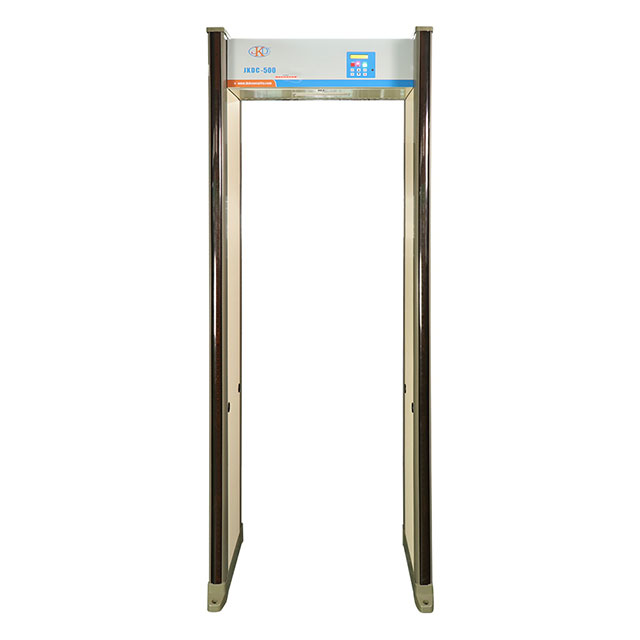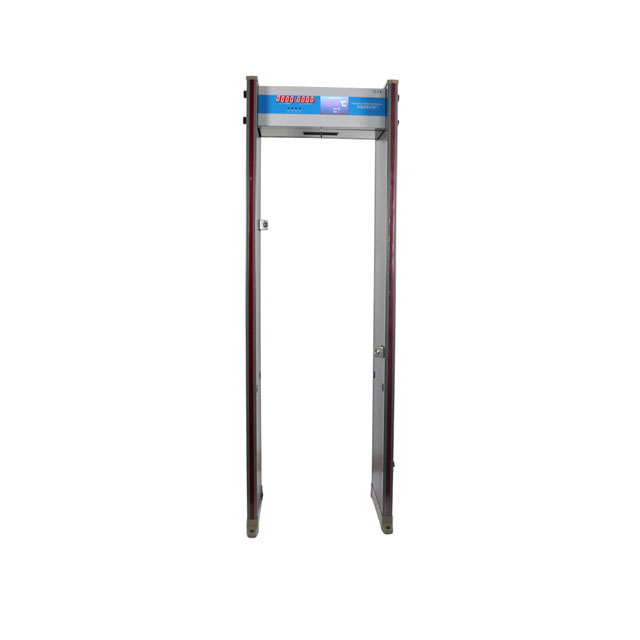©Copyright 2002-2026 JKDC Security Co., Limited. All rights reserved. Privacy Policy | Terms and Conditions Site Map
Provide One-stop Security Solution for a Safer World
Metal detectors provide the community with an essential tool to screen individuals that may be carrying weapons or contraband that contain metallic components. Available in walk-through and handheld models, metal detectors are commonly used at checkpoints in airports, schools, courthouses, prisons, and military installations.
Walk through metal detectors can be designed for either indoor or outdoor use. Outdoor models are weatherproof and are often used at temporary venues, such as concerts or sporting events. Indoor models are typically installed at a fixed location. They can, however, be moved if needed.


Technology Overview
Metal detectors use electromagnetic fields to passively or actively detect the presence of metallic objects. Passive detection measures the changes in the Earth’s magnetic field caused by an object. In active detection, a metal detector generates a time-varying magnetic field, either in the
archway of a walk-through model or in the space near a handheld model, to determine the amount of metal present in an object.
Metals such as iron, nickel and cobalt are detected by passive and active metal detectors. Other metals, such as copper, brass and aluminum, are detected only by active means.
Walk-through metal detectors are categorized as single-zone or multiple-zone. Multiple-zone
technology is replacing single-zone technology, which has been in use for more than 30 years. In multiple-zone metal detectors, the archway is divided into horizontal zones. The sensitivity of each zone can be adjusted, increasing the ability of the metal detector to differentiate between weapons and metal items that do not pose a danger, such as keys and coins. The horizontal zones can be further divided into vertical sectors. This makes it possible to identify the approximate location of a weapon or other contraband.
Design Trends
There are several design trends for walk through metal detectors. One is the integration of walk through metal detectors as a component in security systems. This integration allows operators to remotely monitor metal detectors and lock access doors if an alarm is triggered. Another design trend is the inclusion of a digital camera feature that captures images of the individuals that walk through the metal detector. This feature can aid law enforcement by assisting in the identification of people who flee a security checkpoint.
Considerations
Some factors to consider when purchasing or implementing a metal detector include power requirements, sensitivity settings, and daily testing. A standard 110 volt or 220 volt outlet provides power to indoor and outdoor walk-through metal detectors. A rechargeable battery pack is typically included with an outdoor walk-through metal detector in the event that a standard outlet is not available at the checkpoint location. Battery packs typically provide power for up to three days of continuous operation. Handheld metal detectors can provide up to 80 hours of continuous operation and can be powered by either 9-volt (V) batteries or rechargeable battery packs.
Why Choose JKDC Security?
· One-stop security solution
18 years experience offer a one-stop security solution, JKDC SECURITY can help you save time and costs. Worldwide clients across 80 countries, with thousands of stable projects. JKDC SECURITY can offer customized equipment, measurements designed according to your site. For large amounts, the custom logo is available for free.
· Professional production and fast delivery
· Advanced technology and competitive price
· 7/24 online after-sales service
If you are looking for a reliable merchandise of Walk Through Metal Detectors, JKDC Security is a good choice for you. Contact us now!